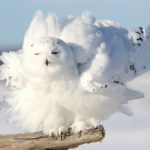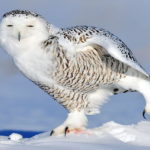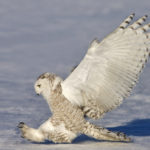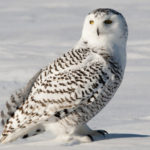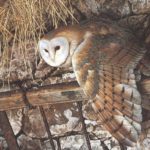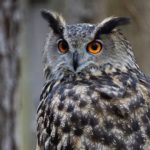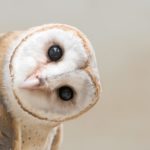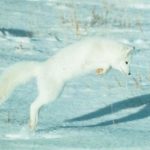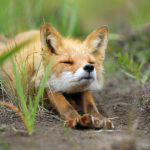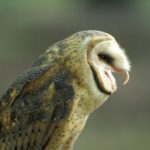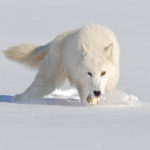Snowy owls
 A snowy owl or a white owl is a large beautiful bird that lives in the tundra. Females are much larger than males. The length of the female body can reach 70 cm, the wingspan is 165 cm, and the weight is 3 kg. The male is usually smaller, his body length does not exceed 65 cm, and the weight does not exceed 2.5 kg. An adult snowy owl has a beautiful snow-white outfit with small black specks.
A snowy owl or a white owl is a large beautiful bird that lives in the tundra. Females are much larger than males. The length of the female body can reach 70 cm, the wingspan is 165 cm, and the weight is 3 kg. The male is usually smaller, his body length does not exceed 65 cm, and the weight does not exceed 2.5 kg. An adult snowy owl has a beautiful snow-white outfit with small black specks.
Since the owl lives in the snowy tundra, such a coloring is patronizing for it, and against the background of snowy landscapes the bird becomes invisible. The paws of the owl are also covered with thick feathers, reminiscent of long wool. The beak is painted black. Eyes large bright yellow. The white owl is a silent bird, most often its voice can be heard during the breeding season. The cries she makes are reminiscent of loud barking and croaking.
White Owl lives in the tundra zone. This bird can be found in the tundra of Eurasia and North America, in Greenland, on the islands located in the Arctic Ocean. With the onset of winter, the snowy owl can move the steppe zone to the forest-tundra, and in the spring it returns to the tundra, its habitual habitat. This bird prefers spacious open spaces and almost never occurs in forests.
A white owl is a bird of prey. She prefers to hunt late in the evening or early in the morning. The owl carefully protects the territory next to its nest and never hunts near it. Other birds know this and often settle near the owl nest, finding, thus, protection from predators for themselves and for their offspring. An owl can hunt in two ways – catches up its prey on the fly or sits on a hillock, looking for suitable prey, and then swiftly attacks it. The enemies of the white owl are few – mostly foxes, arctic foxes and skuas, which are dangerous because they can climb into the owl nest and eat eggs. In natural conditions, the snowy owl lives for about 9 years, and in conditions of captivity the life expectancy is much longer – up to 28 years.
More often than not, owls feed on small rodents, but can also hunt for larger prey – geese, white partridges, ducks, hares, hedgehogs, ermines. The basis of the diet of the white owl is lemmings – small mouse-shaped rodents. According to scientists, one owl eats about 1600 of these animals per year. Small prey the bird swallows whole, and the large one is torn into smaller parts. The owl can feed on carrion if there is no other prey.
A white owl takes out the chicks once a year. In early spring, owls create a couple, and in May the female lays eggs in the nest. The pair can be constant for several years, and can be created every year from scratch. The nest is most often arranged on some elevation. The owl nest has a very simple structure – a shallow hole in the ground, covered with down and soft plants. Usually the owl lays in the nest from five to eight eggs. But when there is a lot of food, 16 eggs can also be laid. Eggs owl lays not immediately, but gradually – a day, one by one. The female incubates eggs a little more than a month – from 32 to 34 days. All this time the male takes care of her, bringing food to the nest. Soviets hatch from the eggs one by one, one for each day per day. When a few owls appear, the owl begins to leave the nest, flying away for hunting. During the absence of an owl, the senior soviat warms the younger chicks and eggs, of which the chicks have not yet hatched. When the soviets are 51-57 days old, they begin to fly.
